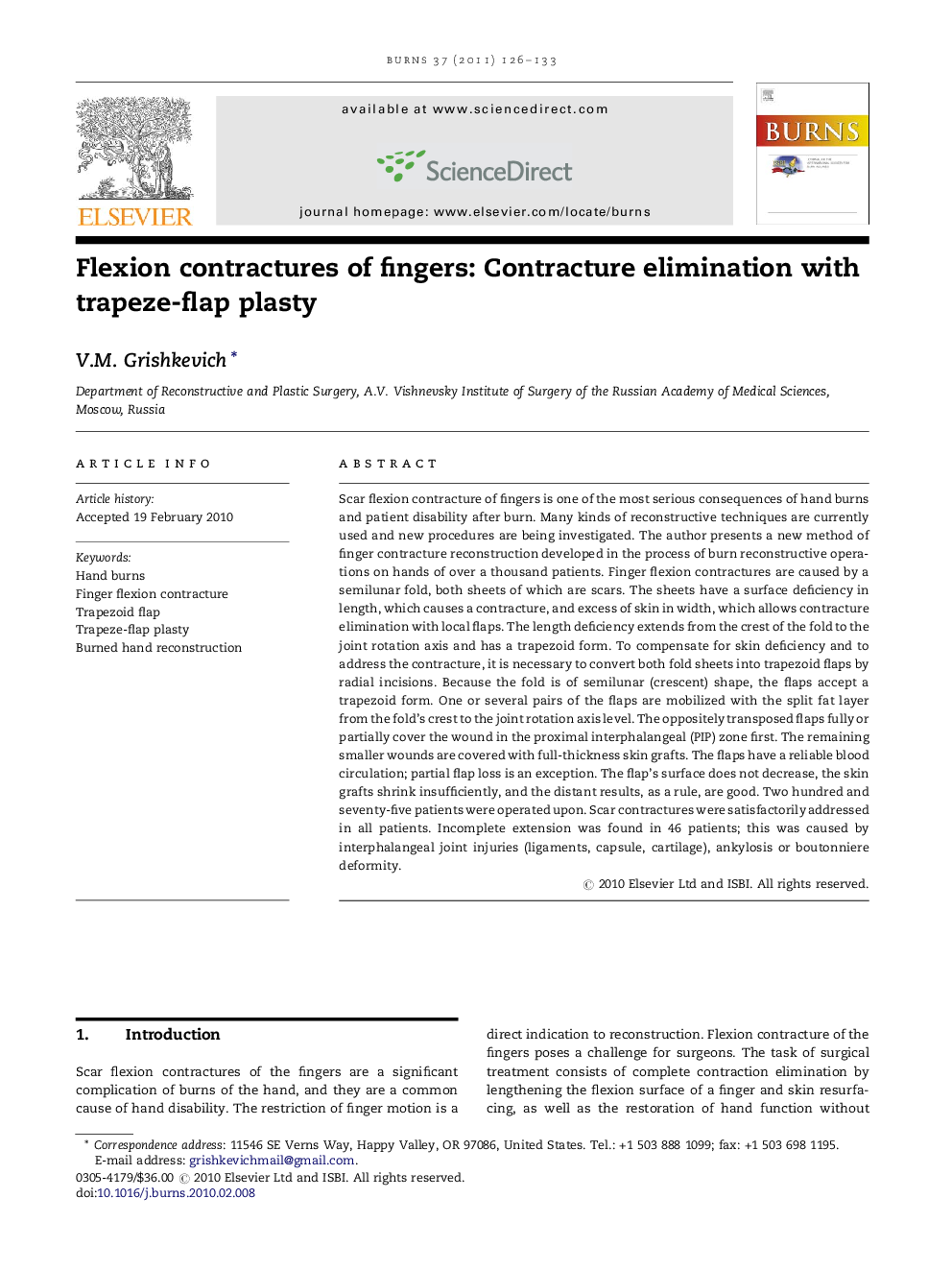| کد مقاله | کد نشریه | سال انتشار | مقاله انگلیسی | نسخه تمام متن |
|---|---|---|---|---|
| 3105025 | 1191670 | 2011 | 8 صفحه PDF | دانلود رایگان |

Scar flexion contracture of fingers is one of the most serious consequences of hand burns and patient disability after burn. Many kinds of reconstructive techniques are currently used and new procedures are being investigated. The author presents a new method of finger contracture reconstruction developed in the process of burn reconstructive operations on hands of over a thousand patients. Finger flexion contractures are caused by a semilunar fold, both sheets of which are scars. The sheets have a surface deficiency in length, which causes a contracture, and excess of skin in width, which allows contracture elimination with local flaps. The length deficiency extends from the crest of the fold to the joint rotation axis and has a trapezoid form. To compensate for skin deficiency and to address the contracture, it is necessary to convert both fold sheets into trapezoid flaps by radial incisions. Because the fold is of semilunar (crescent) shape, the flaps accept a trapezoid form. One or several pairs of the flaps are mobilized with the split fat layer from the fold's crest to the joint rotation axis level. The oppositely transposed flaps fully or partially cover the wound in the proximal interphalangeal (PIP) zone first. The remaining smaller wounds are covered with full-thickness skin grafts. The flaps have a reliable blood circulation; partial flap loss is an exception. The flap's surface does not decrease, the skin grafts shrink insufficiently, and the distant results, as a rule, are good. Two hundred and seventy-five patients were operated upon. Scar contractures were satisfactorily addressed in all patients. Incomplete extension was found in 46 patients; this was caused by interphalangeal joint injuries (ligaments, capsule, cartilage), ankylosis or boutonniere deformity.
Journal: Burns - Volume 37, Issue 1, February 2011, Pages 126–133